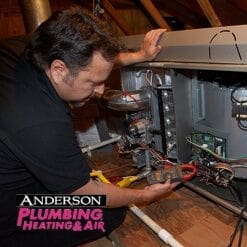
Most San Diego homeowners are aware of the importance of green living and energy-efficient standards. Although many people believe that taking strides to ensure that their homes are not emitting toxins or chemicals into the atmosphere is the right thing to do, there is an added benefit to installing energy efficient and eco-friendly appliances in your home: it cuts down on San Diego heating and air conditioning utility costs.
The United States has updated the way they grade air conditioners by implementing the HERS test.
The Home Energy Rating System (HERS) is an industry standard that measures the energy efficiency of a home or appliance. Beyond the nation-wide HERS factors, the California Energy Commission in 2005 implemented new requirements for HVAC systems located within the state.
The original 2005 regulations allowed for several loopholes or exemptions, but these exemptions will no longer apply starting in January 2014; at this time, all San Diego HVAC systems will need to comply, regardless of whether they were preexisting or new structures. This means that all residents, regardless of their home’s structure, location, or ductwork size, will need to have their systems tested whenever a new system is installed, any time permits must be pulled or cut-ins are performed, or if more than 15 feet of ducting is installed.
*Update since this blog was originally published: It looks like the new regulations will not take effect until July 2014 in order to give regulatory agencies time to staff-up and train inspectors adequately.
The HERS test is completed based on pre-established criteria to discern the energy efficiency of an appliance or a home. Only certified HERS raters can complete the assessments, ensuring that the ratings are legitimate and consistent.
In truth, it is the condition of the full home that completes the HERS rating, and all of the individual components, like ductwork, window seals, and appliance ratings do contribute.
Air Conditioners and HERS
Air conditioners receive a rating called the SEER rating – this rating provides information about that appliance’s energy efficiency. As a general rule, the higher an AC unit’s SEER rating, the more energy-efficient that appliance is. As of 2006, government regulations require that all new AC units be SEER 13 or higher. In new construction, builders commonly provide an AC unit that has a decent SEER rating, but not an exemplary one, so you may need to upgrade your system to one that has a higher SEER.
Your HVAC Ducting
It should also be noted that if your ductwork testing shows 15% or more leakage, then the ducts will need to be replaced to meet HERS standards.
For homeowners replacing their systems, the up-front costs will be higher for systems with a higher SEER number, but the long-term savings should offset this. Consult with your San Diego HVAC expert who can help you weigh the budget vs. benefit in terms of your home and lifestyle.
In either scenario, remember that the increased efficiency comes back to you in the form of lower utility bills, making it a win-win for you and the environment. Your air conditioner is an important component of your home and its SEER rating contributes to your home’s overall HERS rating. Be friendly to the environment and your wallet by doing what you can to ensure energy efficiency in your home.
Homeowners may be eligible for a hardship “free pass” if their ductwork is found to be in the walls or if asbestos is present. For more information about SEER and HERS ratings and requirements, call us at (866) 374-0402 or contact us online.